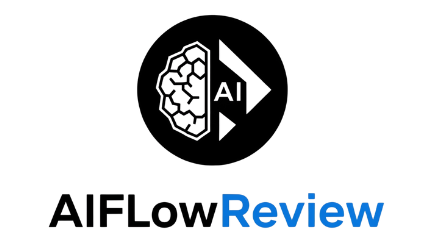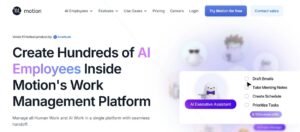AI and automation are shaping how we work and live in ways that were pure science fiction just a decade ago. Whether you’re a tech enthusiast, a business veteran, or just curious about emerging tools, understanding “How AI Automation Work?” matters. It helps you keep up and spot new chances to save time, get smarter results, or boost your organization’s efficiency. Let’s break it down together, in plain language, with some real-world examples and a peek at what’s next.
Understanding How AI Automation Work: Two Technologies, One Goal

Photo by Pavel Danilyuk
AI and automation are often mentioned together, but they aren’t the same. Think of automation as a set of instructions you give to a robot or a computer, so it repeats a task exactly the way you want, every time. AI, on the other hand, is like teaching that robot to think and make choices on its own, a bit like a very fast-learning intern.
At their core:
- Automation: Follows rules. It’s about finishing simple, repeatable work—like processing payroll, sorting emails, or even assembling cars.
- AI (Artificial Intelligence): Learns and adapts. It uses techniques like machine learning and natural language processing to recognize patterns, make predictions, and respond to changes.
Combine them, and you get AI automation: smart systems that not only handle routine tasks, but also make decisions, predict outcomes, or respond to unique situations without constant human direction. For a practical rundown on these terms, I find this guide to AI automation breaks it down nicely.
Everyday Impact: Where AI and Automation Work Together
AI automation is popping up everywhere. It’s behind the scenes of products and services we count on every day. In healthcare, AI-powered tools help doctors spot diseases early, track patient histories, and even automate paperwork so staff can focus on care.
Banks use AI automation for fast, secure transactions and for fraud detection. Manufacturing lines blend robotic arms with AI to predict when machines need fixing (before breaking down) and to dodge costly delays. Customer service? Think chatbots who understand tone, context, and even your frustration, solving problems 24/7 without coffee breaks.
Real-World Examples:
- Chatbots that answer questions faster than a human rep.
- Predictive maintenance in factories using machine sensors and AI to flag issues before they disrupt workflow.
- Fraud monitoring that scans millions of transactions in real-time to catch fraudsters.
These applications aren’t just hype—companies in every sector have ramped up their adoption. According to recent studies and complete guides to AI automation, adoption is being driven by a need to save time, boost accuracy, and create smoother customer experiences.
Boosting Business and Everyday Life
Let’s talk benefits—the tangible things you and I notice. The magic of “How AI Automation Work?” is in how much time, money, and hassle it saves both companies and regular folks.
Some standout advantages include:
- Saved labor hours: Repetitive jobs now get automated, freeing skilled staff to tackle bigger challenges.
- Speedier processes: Tasks that took hours (like approving a loan or checking hundreds of documents) now finish in minutes.
- Scalability: Businesses can grow fast because systems don’t get tired or overwhelmed.
- Smarter recommendations: AI-driven platforms suggest the best products, services, or even the next action on your to-do list.
According to recent findings, integrating AI automation can lift productivity by 10-40%, depending on the industry. For a deeper view on practical business benefits, Salesforce’s outline of how AI automation works covers use cases you’ll probably recognize—and a few you may not have imagined yet.
Challenges on the Way Forward
No technology is perfect right out of the box, and AI automation has its share of growing pains. Some of the big hurdles include:
- Data quality: If the info fed into a system is sloppy, results will be too.
- Transparency: Not always clear how an AI system reaches a decision.
- Bias: AI learns from historical data, which can sometimes bake in old mistakes or prejudices.
- Cyber risks: Automation running at scale increases the need for extra-strong cybersecurity.
Forward-thinking organizations are tackling these with good data habits, regular human check-ins, and solid ethics policies. Keeping a human in the loop is key, both for troubleshooting and for standing behind decisions made by the tech.
The Future of Work: Where AI Automation Leads Us Next
Looking ahead, AI automation is only going to grow more important. Advanced AI agents and autonomous systems will make tasks even faster and more independent. Some experts predict that the arrival of artificial general intelligence (AGI)—machines that can complete almost any task a person can—may change not just how we work, but what we work on.
In workplaces, we’ll see:
- Rising use of AI agents: Digital assistants who manage projects, schedule meetings, and keep information flowing.
- More autonomous factories and offices: Systems handling logistics, customer emails, and optimization on their own.
- New job roles: While some old jobs may fade, new ones like AI trainers, machine learning engineers, and data analysts will take their place.
Studies like those from Forbes on AI and the future of work show the pace of change will keep ramping up. By 2025, millions of jobs could be reshaped, with many requiring new tech skills and AI literacy. A culture of lifelong learning and adaptability will matter more than ever.
To go further, I recommend checking the latest insights from IBM on AI and the future of work for real-world strategies on thriving in this tech-powered era.
Wrapping Up: Staying Ahead and Making Smart Choices
“How AI Automation Work?” isn’t just a question for engineers—it’s for anyone who wants to keep up, adapt, and find opportunity in a changing world. These tools help you do more, whether you’re running a company, building software, or just looking for ways to make daily life smoother.
If you want to get the most out of AI and automation, keep exploring and learning. Reliable directories and review platforms offer insight, in-depth reviews, and hands-on guides. AI Flow Review, for example, is always updating detailed AI tool guides and side-by-side comparisons, so whether you’re brand new or already knee-deep in code, there’s something for everyone.
Stay curious, try new things, and you’ll find yourself ahead of the curve as AI automation keeps changing the way the world works.

















